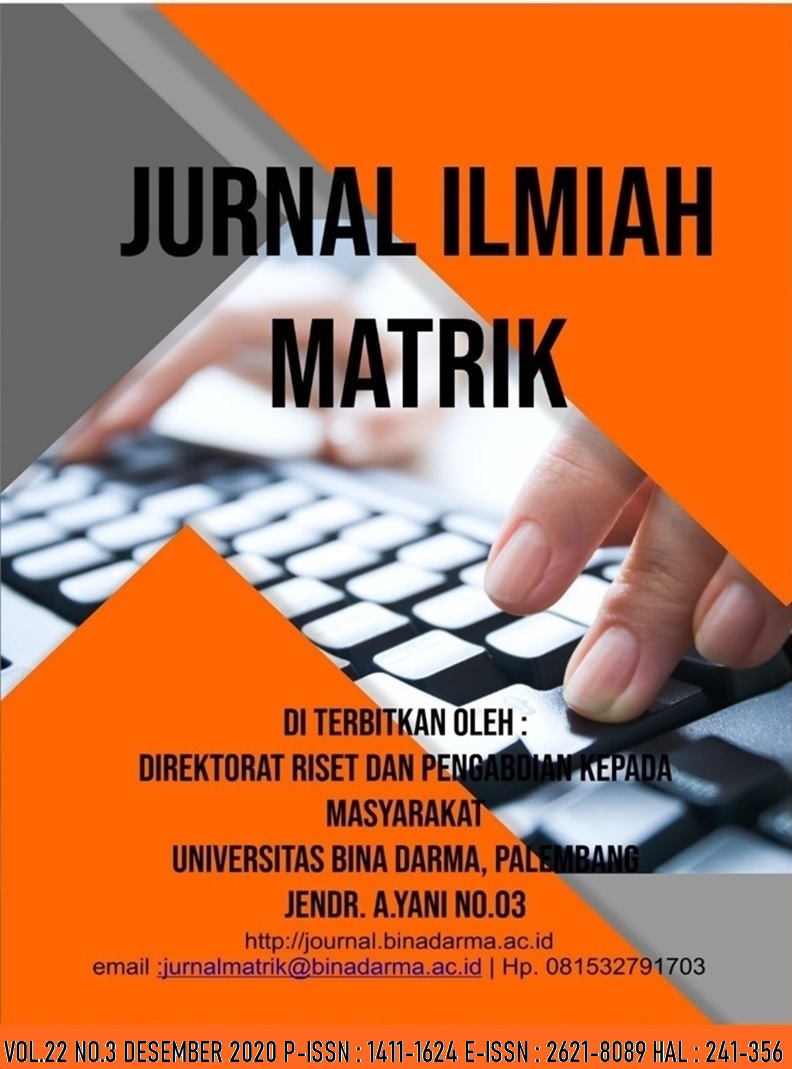ANALISIS RESISTANCE FACTOR DALAM PENERAPAN PEMBELAJARAN BERBASIS ELEKTRONIK MENGGUNAKAN PENDEKATAN HUMAN-CENTERED-APPROACH
DOI:
https://doi.org/10.33557/jurnalmatrik.v22i3.1122Keywords:
information technology, e-learning, factor analysisAbstract
E-learning becomes an alternative way to transfer information effectively and efficiently in adopting information technology as a means of teaching and learning. Information technology applied must be Acceptable, if it’s not, it will display the behavior of resistance to change. This study uses the Human-Centered Approach-related resistance to change in preparation of the questionnaire instrument and using factor analysis in data processing and analysis. The process of taking samples using simple random sampling technique in which the taking of samples of the population that was randomly without regard to strata that exist in the population. Factor analysis model used is Principal Component Analysis (PCA). Phases of analysis of factors such as the correlation matrix, factor extraction, factor rotation, and interpretation of factors. Results from this research can be concluded that these factors play a role in the emergence of resistance to change in sequence from the most dominant factor Competence Factor, Motivation and Planning Implementation Factors, Communications in Leadership Factors, Culture Factor, Situations and Conditions Factors, Personality Factors, and Security Factor. It would be better if the sampling is not only for teachers but also involves students and mapped based on certain criteria which are equipped with the characteristics of each sample.
Downloads
References
[2] R. Hasanah, F.D. Anggraeni. “Gambaran Persepsi Guru Terhadap Blended Learning”. Jurnal Pemikiran & Penelitian Psikologi (PSIKOLOGIA) Vol. 11, No. 3, hal.129-134. 2016.
[3] W.H. Pamungkas, V. Armalina. “Analisis Penerapan Learning Management System Dengan Pendekatan Quantitative Strategic Planning Matrix”. Metik Jurnal, Vol.1. 2017
[4] P.M.C. Swatman dan K.K.T. So. “E-Learning Readiness in the Classroom: a Study of Hong Kong Primary and Secondary Teachers”. 2007.
[5] B. Simamora. “Analisis Multivariat Pemasaran”. Gramedia Pustaka Utama, Jakarta. 2005.
[6] J. Supranto. “Analisis Multivariat Arti & Interpretasi”. Jakarta: PT Rineka Cipta. 2004.
[7] T. Wijaya, “Analisis Data Penelitian Menggunakan SPSS”. Penerbit Universitas Atmajaya.Yogyakarta. 2009.
[8] Gudono. Analisis Data Multivariat. Yogyakarta: Penerbit BPFE. 2012.
[9] R.A. Johnson, D.W. Wichern. “Applied Multivariate Statistical Analysis”. FifthEdition. New Jersey: Prentice Hall Inc. 2002.
[10] A. Widarjono, “Analisis Statistika Multivariat Terapan”. Yogyakarta:Penerbit dan Percetakan Sekolah Tinggi Ilmu Manajemen YKPN. 2010.
Downloads
Published
Issue
Section
License
Jurnal Ilmiah Matrik byhttps://journal.binadarma.ac.id/index.php/jurnalmatrik is licensed under a Creative Commons Attribution-ShareAlike 4.0 International License.












